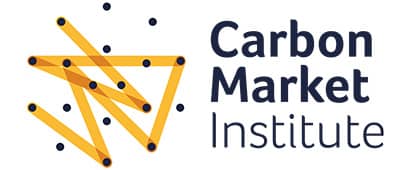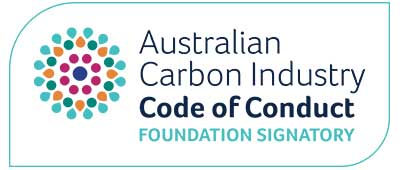Summit showcases growing Aboriginal carbon industry
With Aboriginal projects swelling to 23 under the ERF, the trickle of traditional owners trekking to the Emissions Reduction Summit is turning into a torrent. Could it be that traditional owners prefer the titillated turf of the MCG to the northern savanna plains? Not likely. This year saw traditional owners from Wilinggin, Kowanyama and, for the first time, Kakadu, show their spirit at the summit.
The summit, championed by the Carbon Market Institute, is held each year in the first week of May in Melbourne. You will not find a more enthusiastic host. For the third running, we sponsored the summit and brought down representatives from the now established Kowanyama savanna burning project and the soon-to-be-iconic Kakadu project.
Our leader Rowan held sway over the Indigenous carbon markets session and reinforced for the audience that you can buy carbon credits from traditional owners right now. This maturing of the Aboriginal carbon industry can help businesses with CSR (corporate social responsibility), RAP (reconciliation action plan) as well as carbon credits. I am sure they also work with other acronyms too.
Land and sea manager, Chris Hannocks, and Traditional Owner and senior ranger, John Clark, led off with a heart felt presentation on Kowanyama. Chris traversed the history of building up the project before painting a passionate picture of modern fire management by quads, bikes, choppers and feet. Chris highlighted how traditional knowledge blended with modern science to produce this modern land management technology. John spoke from the heart about the loss of a project manager last year, which affected all, and also about getting something back from what is an indigenous-made technology. Traditional owners are tired of passing on knowledge for no return.
Peter Christophersen, a Bunitj Clan Descendant representing Aboriginal Carbon Fund and Gundjeihmi Aboriginal Corporation, highlighted how fire management could transform Kakadu National Park. While a project is still in the planning stages, Peter told how fire management could not only improve the mammal decline, but also provide a platform to empower joint management by traditional owners in the park. Peter did not shy away from the social benefits of such a project as well—keeping youngfellas in jobs and out of jail. Using his expert knowledge gained from lifelong burning in Kakadu, Peter explained the complex fire patterns of Kakadu with 6 seasons, times of wet and dry, and 13 feet speargrass. In the old times, neighbouring clans would walk vast distances for trading and burn on the way. The project team hopes to have a new project up and away by the end of the year.
Not to be outdone, Alison Page, a Director at the Indigenous Land Corporation, left the room in no doubt that carbon projects are so much more than producing a product. Alison used the story of making damper to explain that you can just follow the recipe but it’s really the stories and journeys along the way that make the damper taste good. Perhaps the social and cultural parts of a project are more important than the product? Before she left, Alison dangled her vision for a training academy in land management for us all to ponder.
Sam Johnston, senior research fellow at UN University, rounded out the session with a broad sweep of savanna fire on the global scale and a call to arms on the opportunity for Australia to show leadership and export our indigenous fire technology. Globally, savannas make up 1/6 of the global land surface and savanna fire accounts for 0.7Gt of global emissions. It’s a big player. Sam made the point that the Australian approach could be relevant around the world. The UN project to date has found that traditional fire management is being reintroduced around the world for environmental, tourism and cultural reasons. Perhaps Australian leadership could add carbon to that equation?
Freddy Sharpe, head of Climate Friendly and regular summit raconteur, led another session on ‘co-benefits’ or ‘core benefits’ as they are becoming known. Freddy noted the example of replacing wood cookstoves in Africa and the associated health, time, employment and other benefits. In Australia, there is charismatic carbon, gourmet carbon – just where are we going next?!
Emily Gerard, senior lawyer from Allens and longtime protagonist for indigenous carbon, made the point that the 2020 summit in Canberra sparked a carbon interest with indigenous leaders who attended. The national emissions trading scheme soon followed and, when indigenous land looked like being cut out, indigenous leaders collected and called it out. While the co-benefits conversation was looking promising, an important flip occurred when the 2014 ERF changes removed the ability to note biodiversity funding on the credit register. It’s now about lowest cost carbon. Looking to the future, Emily also wondered how the freshly minted sustainable development goals might be integrated into carbon projects.
Ari Gorring, head of strategic business development at the Kimberley Land Council, talked about the Kimberley history where people were removed from country and savanna fire increased. The KLC had worked for a long time to ensure that legislation could be an enabler of fire management projects. Now that had occurred, the large-scale Kimberley projects had produced a slew of broader benefits in addition to reducing the fires: employment, animals, health, less drinking and less violence. The projects are having a positive impact on lives.
Warren Greatorex, head of Wilinggin Aboriginal Corporation and Kimberley Traditional Owner, gave direct support to this theme when he talked about projects benefiting “our inner spirit”. Warren told “this makes up our DNA, who we are”. It is the process of going back on country that rejuvenates this spirit or ‘lian’. Traditional owners are not as fussed about the boring stuff, but are excited by a sense of development and invigoration of the spirit.
Now is your spirit excited? It must be. That is a pretty full feast of indigenous carbon dishes. Well done to all and good luck.





























